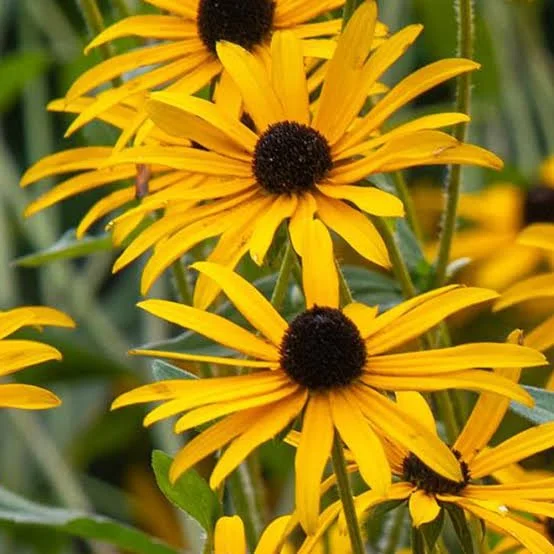Species Profile: Black-eyed Susan
Common Name: Black-eyed Susan
Scientific Name: Rudbeckia hirta
Location: Widespread across Central Texas in prairies, roadsides, meadows, and open woodlands. Prefers well-drained soil and full sun but is adaptable to various conditions.
Mating Habits: Reproduces sexually via cross-pollination by insects. Each flower head contains dozens of small florets, each capable of producing a seed when pollinated.
Seasonal Habits / Bloom Time: Blooms from late spring through early fall (May to September). A short-lived perennial or biennial, often reseeding itself annually.
Ecological Relevance: Important nectar and pollen source for a wide range of pollinators, including butterflies, bumblebees, and solitary bees. Seeds are eaten by birds in late summer and fall.
Interesting Facts:
Iconic yellow petals with a dark brown to black central cone.
A pioneer species that quickly colonizes disturbed areas.
Often used in wildflower mixes and roadside plantings.
Native Wildlife Associations: Attracts butterflies like the Common Buckeye and American Lady, as well as various native bees. Goldfinches and other birds feed on its seeds.
Conservation Note: A versatile and hardy native that supports pollinator populations and wildlife. Low maintenance and beneficial in both ornamental gardens and prairie restorations.

